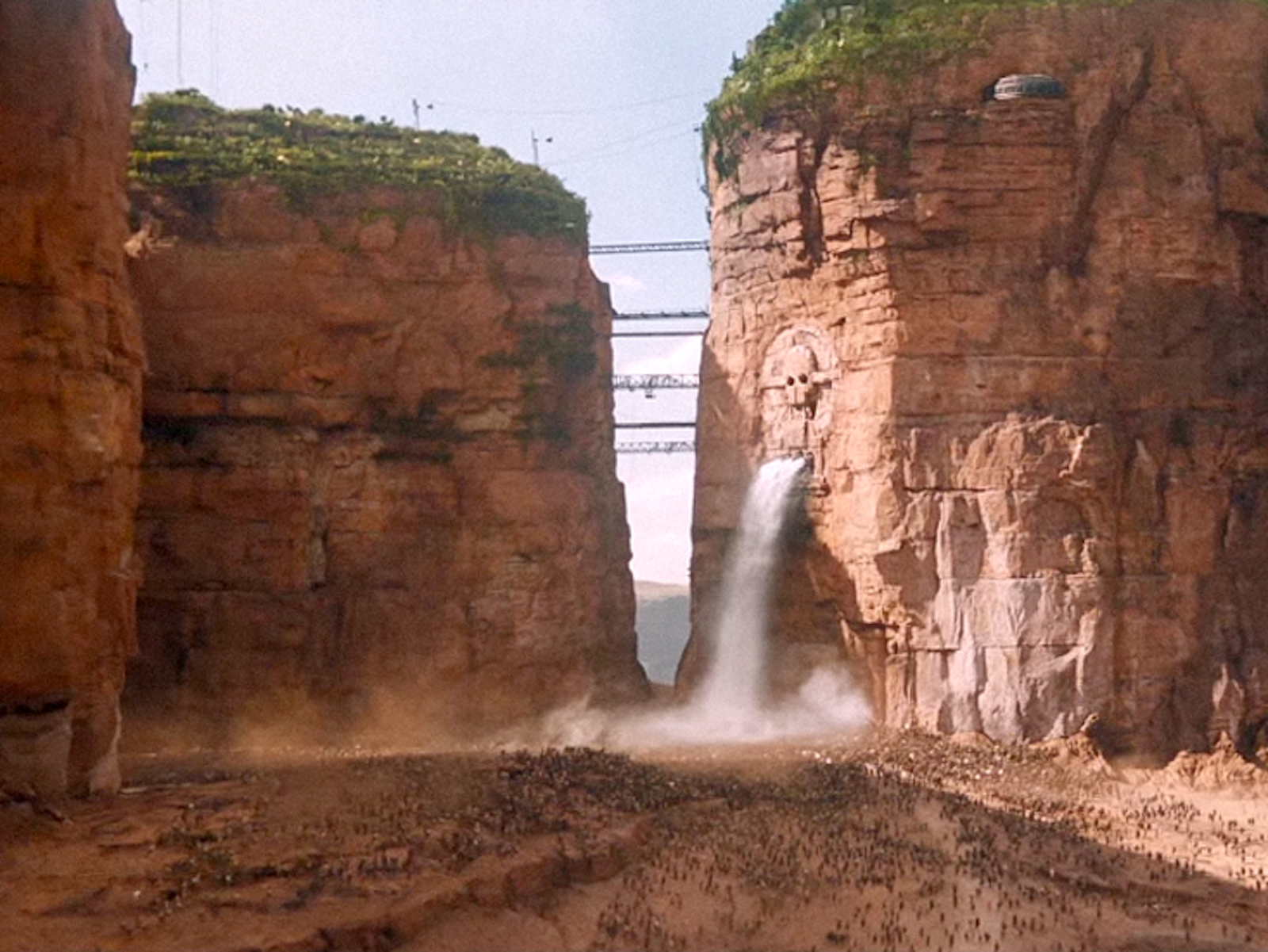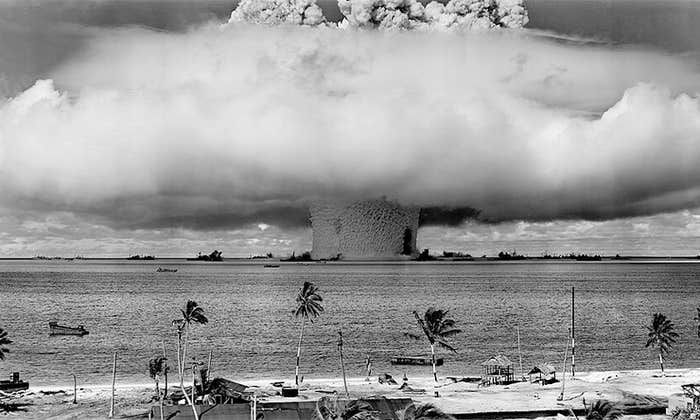Mad Max: Fury Road envisions an embarrassing, nightmarish future. Worldwide droughts have driven humanity to nuclear war over water, destroying modern civilization, and disfiguring the earth into a planet-spanning Sahara. Decrepit old goons control the last remaining pockets of groundwater and arable land; essentially, the movie is one drawn-out, violent chase scene through a sterile and withered landscape. Entertaining, for sure. But could such drastic desertification really happen on Earth?
If you ignore the plot line about a nuclear holocaust, Fury Road might actually be a fairly realistic, if eccentric, portrayal of where we’re headed. At least Jay Famiglietti, a senior water scientist at NASA, thinks so. As he told a California radio station, the film “resonates quite well” with the state’s punishing drought—and, perhaps one day, the global climate. Human water consumption is depleting one-third of the world’s largest aquifers much faster than rain is replenishing them, according to a new study based on NASA satellite data. Our reliance on these underground reserves will only increase as our population grows and global warming intensifies droughts, shrinking rivers and other groundwater sources. And although scientists don’t know how much longer the planet’s dwindling aquifers will last—10 years? 20,000 years?—it’s not unthinkable that their disappearance could cause bloodshed over water on an apocalyptic scale.
Once we bring out the nuclear warheads, however, our future starts looking very different. Fury Road, which was filmed in the desert of Namibia, “is nothing like the world after nuclear war,” says Alan Robock, a climatologist at Rutgers University, in New Jersey. An outspoken critic of nuclear proliferation, Robock co-authored a 2014 study predicting what would happen to Earth’s climate if India and Pakistan each detonated 50 “Hiroshima-size nuclear weapons.” A previous study showed that the ensuing fires would waft 5 million tons of soot into the stratosphere, which would then spread around the globe, turning the sky mostly black. Because the black carbon in soot can absorb a million times more energy than carbon dioxide, the stratosphere would heat up while surface temperatures plunged, inducing a noxious nuclear winter.

Using global climate models, Robock and his colleagues found that post-war average temperatures on Earth would be the coldest they’ve been in the last 1,000 years. The resulting killing frosts would cut growing seasons short. Meanwhile, the warming stratosphere would thin the atmospheric ozone, enhancing UV radiation that would further decimate crops. Global famine would ensue. Robock has estimated that China’s rice production alone would drop 20 percent, starving 300 million people. Worldwide, the death count could reach about 2 billion.
A global nuclear conflict, like the alleged “water wars” in Fury Road, would end in a blackout far darker and colder. The world’s nuclear powers—the United States, Russia, the United Kingdom, China, and France—now have stockpiles of weapons totaling more than 20,000. It’s almost impossible to fathom the awesome amount of charred remains that would be left floating around the planet after nuclear annihilation. Robock estimates that 150 million tons of smoke would envelope Earth, plummeting temperatures to those of the last ice age 18,000 years ago.
So why the clear, blue skies, George Miller? Perhaps the once smoke-filled air in Max’s world has already cleared. But Robock predicts that process would take around 30 years. Why, then, does Max still look so young?
Another glaring question: Why is water still scarce? “Decades after a nuclear war, [the planet] would be warming up to pre-war levels,” says Robock. “But global warming would be over.” Why? “Because CO2 production would stop with the destruction of civilization.” Man-made climate change, and the drought conditions that come with it, would cease. After the atmosphere recovered, a less carbon-ridden climate and water cycle would emerge. Plus, there would no longer be billions of people drinking the world dry.
But a lush oasis doesn’t a Mad Max movie make.
Brian Gallagher is the assistant research editor at Nautilus.
Lead image: One of the few aquifers left, operated by the grisly warlord Immortan Joe. He tantalizes the local population by showering them with the water pumped from underneath his fortress only to shut it off seconds later, leaving the peasants squabbling over droplets. YouTube/Warner Bros. Pictures




























